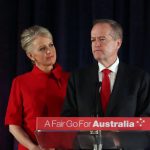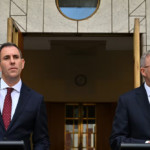116,000 people were without a home on Census night

The rate of homelessness in Australia has increased 4.6 per cent over the last five years, according to new data from the 2016 Census of Population and Housing.
The latest estimates reveal more than 116,000 people were experiencing homelessness in Australia on Census night, representing 50 homeless persons for every 10,000 people.
Dr Paul Jelfs, General Manager of Population and Social Statistics, said that while there was an overall increase in the estimate of homelessness in Australia, this number is made up of various distinct groups and each tells a different story.
People living in ‘severely’ crowded dwellings, defined as requiring four or more extra bedrooms to accommodate the people who usually live there, was the greatest contributor to the national increase in homelessness.
“In 2016, this group accounted for 51,088 people, up from 41,370 in 2011.
“On Census night, 8,200 people were estimated to be ‘sleeping rough’ in improvised dwellings, tents or sleeping out – an increase from 3.2 persons per 10,000 people in 2011 to 3.5 persons per 10,000 people in 2016,” Dr Jelfs said.
Younger and older Australians have also emerged as groups experiencing increasing homelessness in Australia.
“One quarter of all people experiencing homelessness in 2016 was aged between 20 and 30 years,” Dr Jelfs said.
People aged between 65 and 74 years experiencing homelessness increased to 27 persons per 10,000 people, up from 25 persons per 10,000 people in 2011.
Recent migrants, defined as those who arrived within the five years prior to the 2016 Census), accounted for 15 per cent of the homeless estimate.
Almost three quarters of this group were living in ‘severely’ crowded dwellings and the majority came from countries in South-East Asia, North-East Asia and Southern and Central Asia, including India, China and Afghanistan.
The overall number of Aboriginal and Torres Strait Islander people experiencing homelessness in 2016 was 23,437. More than two out of three were living in ‘severely’ crowded dwellings, with just less than 10 per cent ‘sleeping rough’.
Dr Jelfs also acknowledged the support of service providers in enumerating the homeless.
“I would like to thank the service providers and staff who worked with the ABS to tackle the difficult challenge of enumerating this population group and maximise the quality of this important information,” Dr Jelfs said.
Homelessness is not just the result of too few houses and its causes are many and varied. Domestic violence, a shortage of affordable housing, unemployment, mental illness, family breakdown and drug and alcohol abuse all contribute to the level of homelessness in Australia.
However homelessness is one of the most potent examples of disadvantage in the community, and one of the most important markers of social exclusion.
Efforts to help vulnerable groups, such as homeless youths, homeless people displaced due to domestic and family violence and homeless Aboriginal and Torres Strait Islander Australians are ongoing but the problems faced by people without any permanent accommodation appear to receive scant political attention compared to the lobbying of more affluent people for government assistance and generous tax breaks to ease their climb up the property ladder.
Further 2016 Census homelessness data can be found on the ABS website.
ACOSS Reaction
Dr Cassandra Goldie, the CEO of the Australian Council of Social Service, said the increase in homelessness was of little surprise when so little has been done to address housing affordability and inadequate incomes.
She called on the government to address the conditions which permit poverty and increase inequality in Australia.
“Government must do better in reducing homelessness. As a starting point, it must not walk away from agreements like the National Partnership on Remote Housing, which is a critical part of addressing the affordable housing crisis for Aboriginal and Torres Strait Islander people in remote communities.
“Families, friends and neighbours in our communities and towns are stretched by low incomes, the casualisation of the workforce, cuts to social security, and unaffordable housing.
“Rental affordability is at crisis point for people on low incomes or the minimum wage.
“Inadequate incomes and unaffordable housing are forcing people into homelessness, as shown by today’s figures. Children with their parents, young people, workers, and older people are living in cars, in boarding houses and on other people’s couches.
“We hear over and over from people staring down the barrel of homelessness because they cannot afford to pay for essentials. People are choosing between feeding themselves or their children; paying an energy bill or covering the cost of dental care.
“Income support payments, especially Newstart, are completely inadequate to cover basic living costs, as is Rent Assistance.
“Anglicare Australia recently found that there are just 28 affordable rentals Australia-wide for people receiving Newstart or Youth Allowance and Rent Assistance.
“Many households are paying around 50% of their income on rent, leaving them unable to pay for basics like food and electricity.
“We need immediate solutions to this crisis. We need an independent body to monitor and evaluate housing and homelessness. Homelessness numbers should be decreasing in a wealthy country like ours, not increasing.
“Newstart and related payments must increase as a matter of urgency. $274 per week is not enough to prevent poverty or homelessness. Rent Assistance must also go up by 30%. We need investment in social housing and affordable rental, including incentives to encourage investment in new stock for low-income households.”
“We cannot let homelessness continue to increase. Government must develop a new national housing and homelessness strategy as a priority, with clear targets to increase the supply of affordable housing for low-income households and to reduce homelessness.”

Open Forum is a policy discussion website examining the social, political, economic, cultural and environmental issues of today. We welcome contributions and invite you to follow us on Twitter, Linkedin, Federated Press and Vivaldi Social. We #StandwithUkraine.













